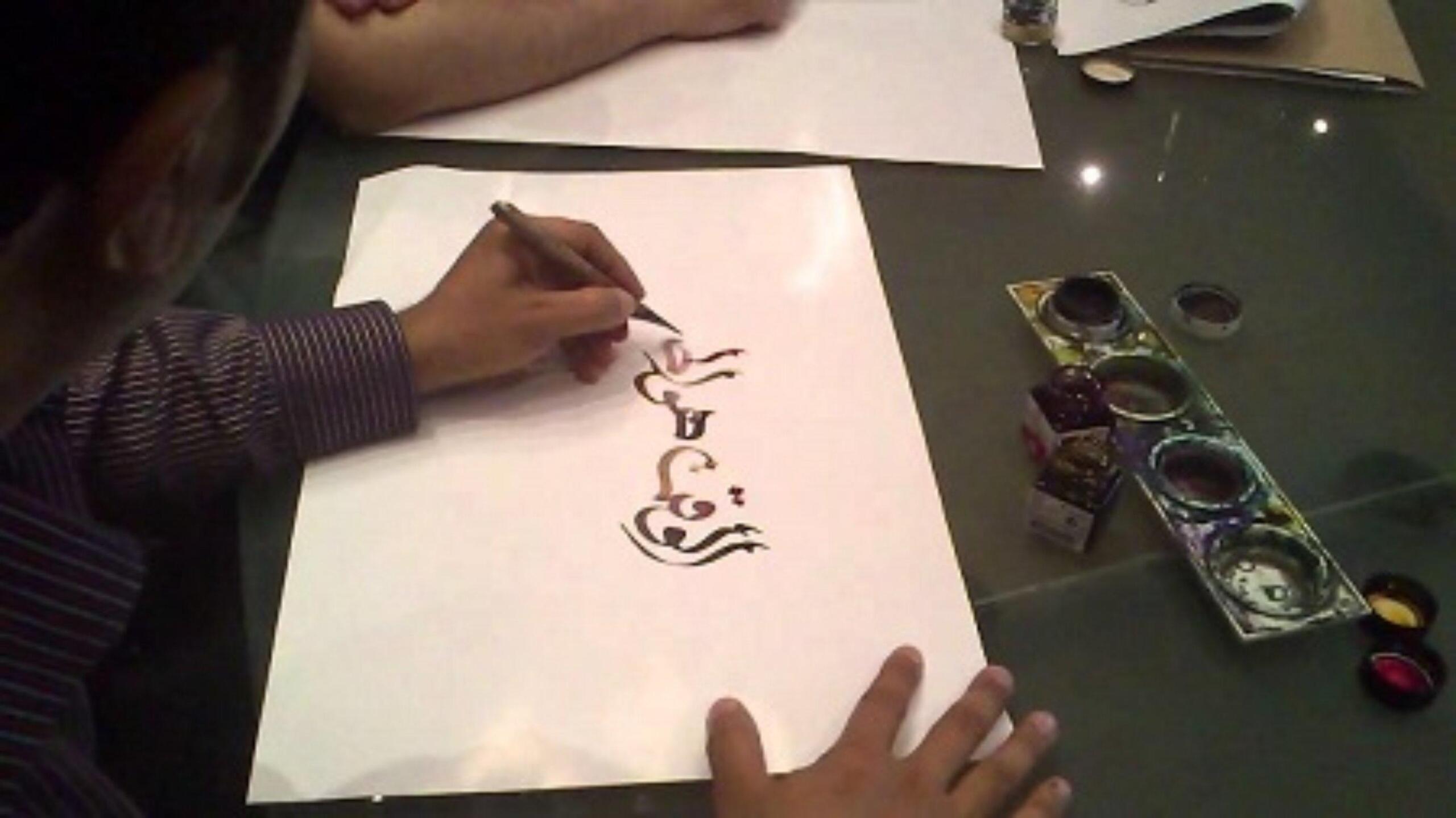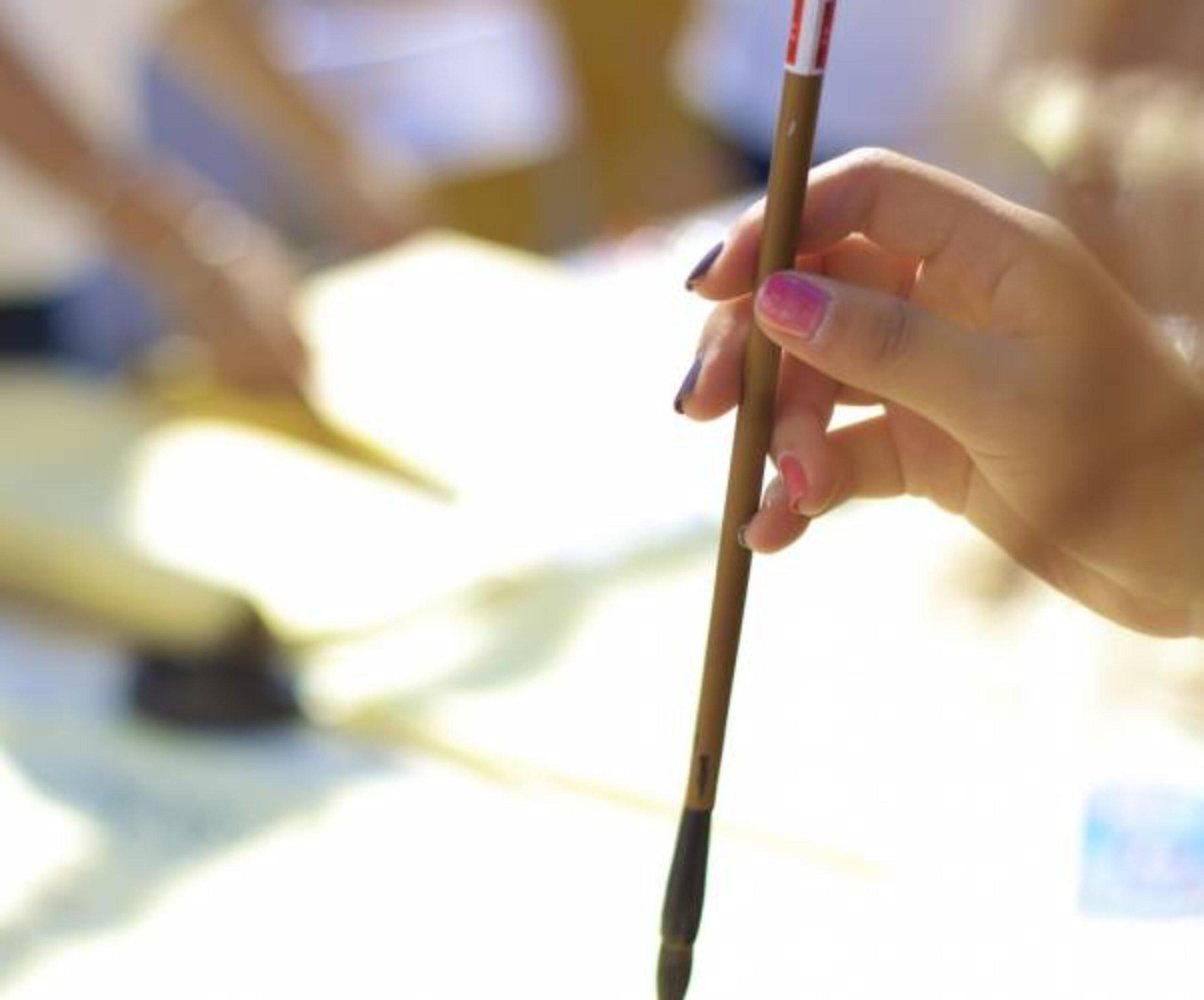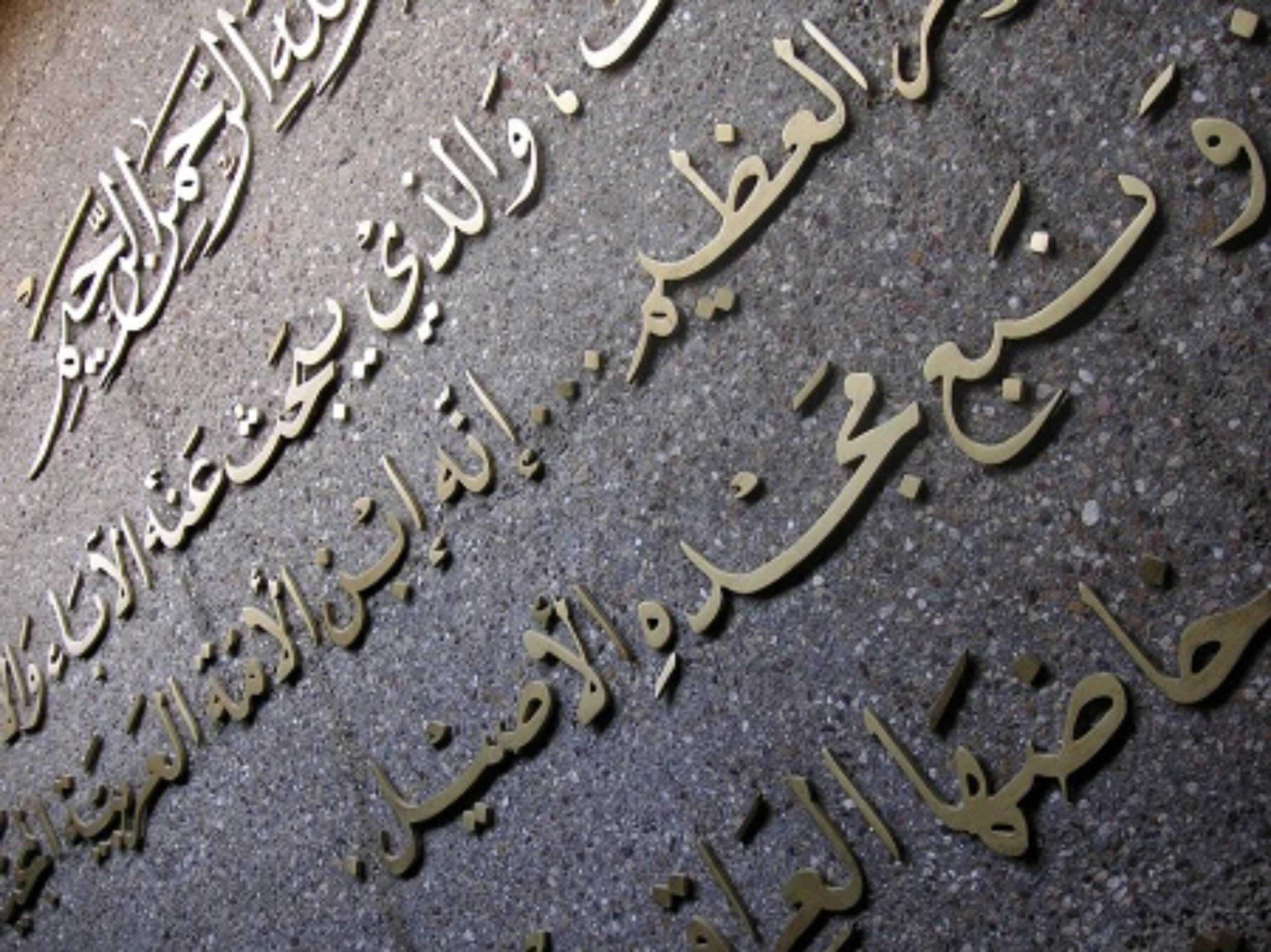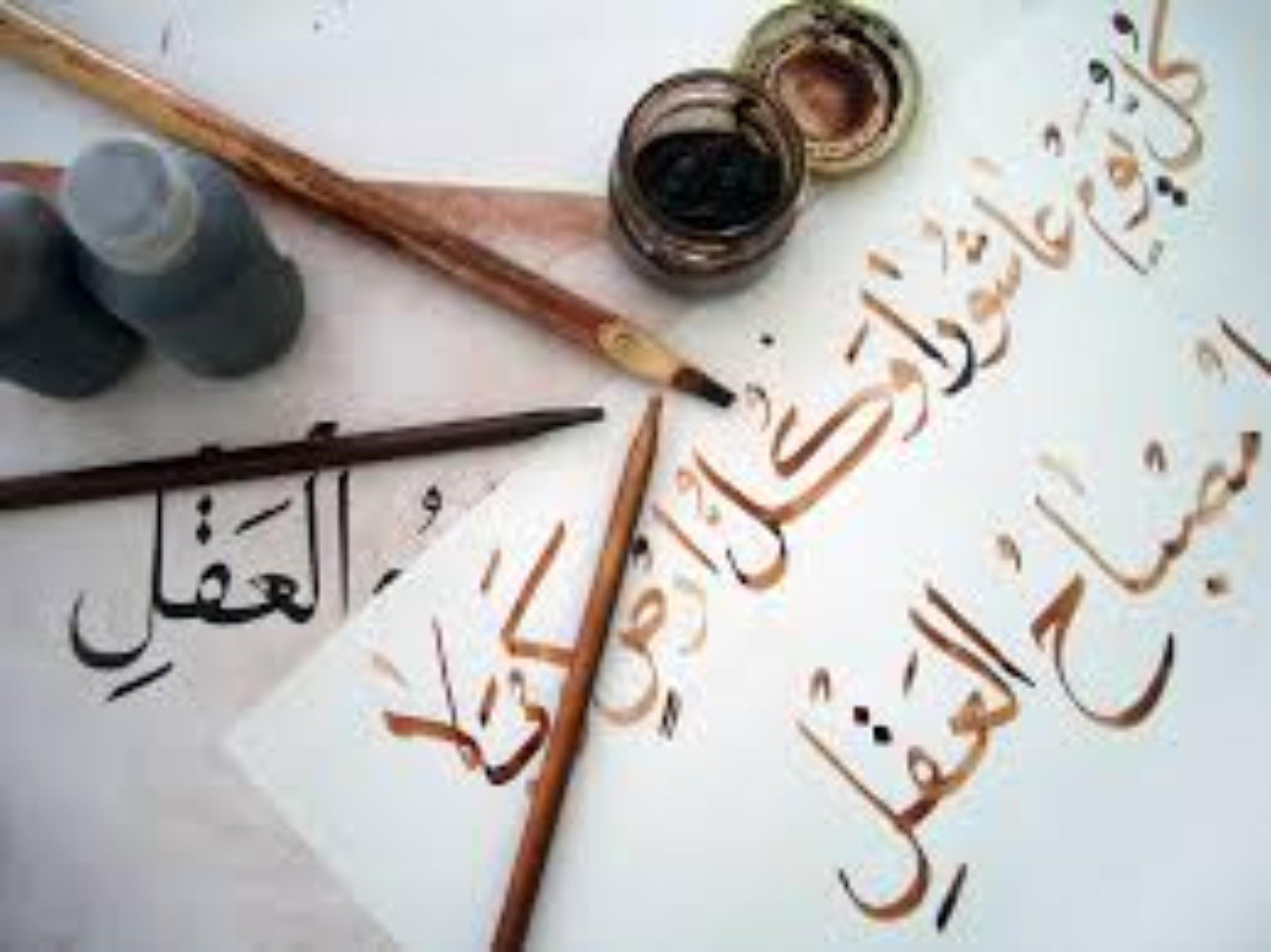Explore Arabic culture and civilization and discover the incredible richness of its history.
The centuries-old Arabic language (the holy language of the Quran and Islam), and its calligraphy have always fascinated the uninitiated.
Perhaps you're wondering what exactly it is that a scribe does. How did Chinese art along with Arabic and Japanese calligraphy become an icon of beautiful handwriting?
And today, we just use printers!
Arabic calligraphy, as well as Chinese and Japanese calligraphy, fall somewhere between writing (by hand) and drawing.
From the beginning of time, beautifully written Arabic letters have been used to write poetry and learn the language with elegance. So much so that Arabic calligraphy is now widely considered to be an art form.
Is is possible to learn the Arabic language through Arabic calligraphy?
How might you learn Arabic online for free via calligraphy? Read on to find out more about the ancient art of calligraphy and several ways to learn Arabic for free.

History Of Arabic Calligraphy
Arabic calligraphy is an ancient art form that has been an integral part of Islamic culture and history for centuries. It is the artistic practice of handwriting and calligraphy based on the Arabic alphabet, known as "khatt".
Arabic calligraphy has not only served as a form of decorative art but has also played a significant role in the preservation and promotion of Arabic literature, religion, and culture. Its influence extends beyond the Arabic-speaking regions and has left a lasting impact on the world of typography, design, and visual communication

The history of Arabic calligraphy dates back to the 6th century and has evolved over time, reflecting the development and expansion of the Islamic Empire.
Here is a brief overview of the major stages and styles in the history of Arabic calligraphy:
- Arabic Musnad: The first Arabic script, Arabic Musnad, likely developed from earlier languages like Canaanite and Aramaic Nabataean alphabets. It had basic, non-cursive shapes and was used in Yemen until the 6th century BC.
- Al-Jazm: The Al-Jazm script, derived from the Nabatean script, emerged in the Arabian Peninsula and continued to develop during the early Islamic era. Different styles of Al-Jazm script, such as Hiri, Anbari, Makki, and Madani, were used during this period
- Kufic Script: The Kufic script evolved as one of the oldest Arabic scripts, primarily used for inscriptions on stone, metal, and architectural decorations such as mosques and palaces. It originated in Kufa, Iraq, but was also used in Medina. The early Kufic script lacked dots and diacritical marks but later incorporated them. Over time, different variations of the Kufic script developed and were used in different regions, such as Egypt and Iraq.
- Thuluth Script: The Thuluth script, meaning "one-third" in Arabic, was developed during the Abbasid dynasty and refined by calligrapher Seyh Hamdullah in the Ottoman period. It is a cursive script known for its clear structure and readability, making it suitable for various purposes, including architectural decorations and copying religious texts.
- Naskh Script: The Naskh script, used to copy books like the Holy Qur'an, was also developed during the Abbasid dynasty and refined during the Ottoman period. It is known for its readable glyphs and is still widely used today, particularly in the design of Arabic books.
- Ta'liq Script: The Ta'liq script, meaning "suspension", was developed during the medieval period and is known for its connected letters and rounded shapes. It was widely used for various purposes, including messages, books, letters, and poems.
- Nasta'liq Script: The Nasta'liq script is primarily associated with Persian calligraphy but has also been used in Arabic scripting. It is characterized by its upward slant to the left and is often seen as more elegant and decorative.
Throughout history, calligraphers have developed unique styles within these scripts, resulting in various regional and artistic variations. The styles include the Fatimid Kufic, Maghribi Kufic, Mashriqi Kufic, Ghaznavid, and Khorasan scripts, among others
Arabic calligraphy is an exceptionally precise and sophisticated art that leaves no room for improvisation. Each Arabic letter must be drawn according to a strict order and with an emphasis on brush position. Each sign must be finished with the point of the brush (or qalam).
Of course, such a meticulous script as that of the Arabic alphabet has a long history. We must go back many centuries to find the origin of the first Arabic letters, to 512AD to be exact, to the inscription of Zabad found in the Syrian desert in the Middle East. Arabic, the sacred language of the prophet of Allah, the Quran, and Islam, is a derivation of Aramaic and Nabataean and was used principally for writing. Arabic was the language of poets and is referred to as literal (or literary) Arabic as opposed to dialectical Arabic (local dialects derived from literal Arabic).
Calligraphy has a long history, and it has long been used throughout Islamic culture and in Islamic art. The role of Arabic script in the Holy Quran means that calligraphy has unimaginable importance in the Islamic world.
Ever since the Prophet Muhammad scribed the Quran as told by Allah, Arabic writing and Islamic calligraphy have been enshrined together in every Arabic text and manuscript.
Calligraphy is now seen in parchment art using the qalam and taught in modern courses for those who want to learn calligraphy.
Calligraphic letters and writing adds such beauty to the already beautiful Eastern texts. For those seeking to learn the Arabic language and its calligraphy for free, remember that you are learning a language with a rich history, a language that is above all literary and meant to be written.
How Can I Write My Name in Arabic Calligraphy?
- Start by researching the Arabic alphabet and familiarize yourself with its letters.
- Consider the pronunciation of your name and how it would be written in Arabic.
- Find a reputable calligrapher or use online resources that offer customizable Arabic calligraphy.
- Provide the calligrapher with the spelling and pronunciation of your name, if applicable.
- Choose a style of Arabic calligraphy that you prefer.
- Collaborate with the calligrapher to create your personalized Arabic calligraphy design
Arabic Calligraphy Generator
The Arabic Calligraphy Generator is a free online tool that allows you to convert your name or any text into Arabic calligraphy.
Simply type your name in Latin characters and click "GO" to see how it would look in Arabic calligraphy. Please note that this tool provides an approximate match as certain sounds may not exist in Arabic
Arabic Name Generator
The Arabic Name Generator website provides a free tool that can instantly convert your text into beautiful Arabic calligraphy. With just a few clicks, you can choose the font type, background gesture, and text size to create your desired design. This tool also supports the "Yamli" smart Arabic keyboard, which translates English letters into Arabic letters

Learn to Write Arabic Calligraphy for Free

Tracing Arabic letters with a brush (or a qalam, a sharpened reed used for writing) has links to painting and drawing. For some, the act is almost mystical. Don't forget that Arabic (literary Arabic to be specific) is the sacred language of Muslims and the Quran (as well as Islam). In fact, some students may consider learning Arabic for free through calligraphy for religious reasons.
Are you eager to use calligraphy to get a quick start on your Arabic instruction? Calligraphy isn't a set of random strokes, and you should know that there are several types of calligraphy used to write the Arabic language. Here are the 4 principal styles:
- Kufic: This is one of the oldest styles of Arabic calligraphy and is known for its angular and geometric shapes. It was commonly used in early Qur'anic manuscripts and architectural inscriptions.
- Naskh: Naskh is a cursive script that is widely used for everyday writing and printing. It is known for its legibility and simplicity, making it one of the most commonly used styles in modern Arabic typography.
- Thuluth: Thuluth is a large and elegant script that is often used for decorative purposes. It is characterized by its elongated vertical strokes and sweeping curves, making it suitable for inscriptions and artistic compositions.
- Diwani: Diwani is a highly decorative script that was developed during the Ottoman Empire. It features exaggerated curves and intricate flourishes, making it a popular choice for official documents and royal decrees.
- Ruq'ah: Ruq'ah is a simplified and compact script that is often used for handwriting and informal purposes. It is known for its fast and fluid strokes, making it easy to write quickly.
You are now ready to choose the style of calligraphy with which you would like to take Arabic lessons with an Arabic teacher. Likewise, for those seeking to learn Arabic for free through calligraphy, browse YouTube. Numerous tutorials are available to help you learn to read Kufi, Diwani, Farsi, or Nastalik calligraphy.
Discover other Arabic language course on Superprof.
Online Calligraphy Courses for Free Language Learning

You've probably already searched for "free Arabic", "easy Arabic", "Arabic online", or "beginning Arabic" when looking for free Arabic courses that incorporate calligraphy (courses for learning grammar, pronouns, verbs, vocabulary, the alphabet, translation, pronunciation, vowels, etc.).
Or, perhaps you've decided to trust in an expert calligrapher, a native Arabic teacher who specializes in literary Arabic (not dialectical Arabic)?
Why not opt for Arabic or other language courses?
If English is your native language and you have no experience with Arabic, learning this foreign language with the help of a tutor is clearly the best way to progress rapidly for all beginners.
But, if you prefer to take Arabic language courses online at no charge, you certainly have that option!
There's no need for an Arabic teacher if you opt for the following websites.
- Firdaous.com offers interesting lessons and a great introduction to the Arabic language. Learn the secrets of drawing curves and lines. Find out how to write your name in Arabic. Study the history of the art of calligraphy on calligraphycourse.com. This site offers detailed thorough instruction in the art of calligraphy, including quotes, proverbs, calligraphy art, and cursive writing.
- Browse YouTube to find videos and podcasts with which to learn Arabic for free online. There are many video tutorials available online for English speakers and students just like you. Learn to draw the magnificently beautiful letters of the Arabic alphabet and learn to read them too (you may even need an Arabic keyboard!).
Arabic Calligraphy: A Beautiful Art Form and a Useful Tool for Learning Arabic
The Arab world has a rich history which has given birth to an even richer culture. From Ancient Egypt to the Ottoman Empire, the influences and inputs have come from far and wide.
Arabic calligraphy itself is just one example of the Islamic arts; architecture and ceramics are others.
But this form of writing the written word is not just a decorative form of artistic expression.
Arabic calligraphy carries great importance in the Muslim world due to its links to the Quran, and for anyone who wants to learn Arabic, calligraphy will provide the vehicle to read and write Arabic.
So by all means appreciate the aesthetic appeal of Arabic calligraphy, but don't underestimate its usefulness in learning the 5th most spoken language in the world. And remember to use all of thew resources for learning Arabic that are available to you.
On a final note, you may find a bit of inspiration among the works of Ghani Alani as you learn Arabic calligraphy.















